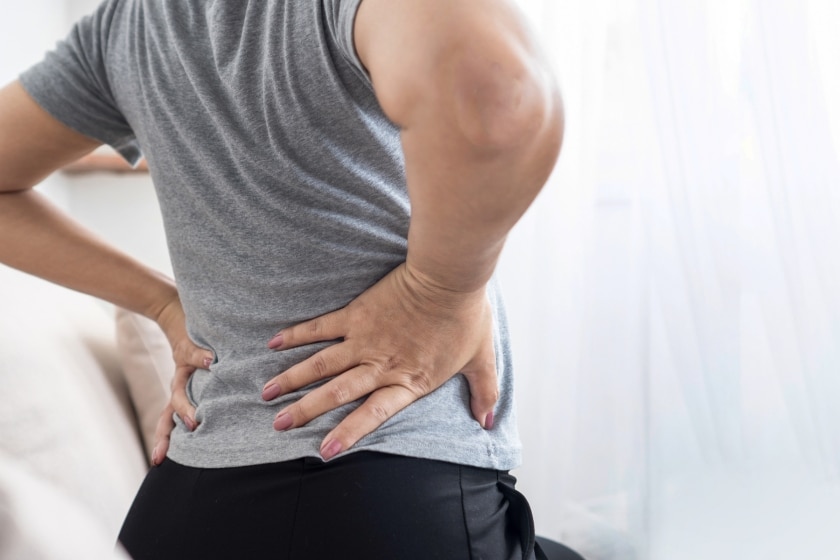Hip pain is a challenge many people face at some point in their lives. Whether it’s a dull ache after sitting too long, stiffness in the morning, or discomfort that limits daily movement, hip pain can interfere with your ability to enjoy life fully.
For some, it comes on suddenly after an injury. For others, it develops gradually over time due to wear, weakness, or lifestyle habits. Regardless of how it starts, hip pain often signals that your body needs attention — not simply a wait-and-see approach.
At Highland Physical Therapy, we see hip health as a key piece of staying active, independent, and confident. In this blog, we’ll explore the common causes of hip pain, what daily life factors may be making it worse, and the strategies you can use to support lasting comfort and strength.
Why Your Hips Matter So Much
Your hips are among the body’s largest weight-bearing joints. They form a vital link between your upper and lower body, helping you walk, stand, bend, twist, and balance. Strong hips also protect your spine and knees, distributing weight evenly to prevent strain elsewhere.
When hip function is limited, it doesn’t just cause localized pain — it can ripple through the entire body. Weak or stiff hips can increase stress on your lower back, knees, and even ankles. That’s why caring for your hips is about more than one joint; it’s about protecting your overall mobility.
Common Causes of Hip Pain
Hip pain can stem from many different factors. Here are some of the most common:
1. Muscle Weakness
Weak gluteal and core muscles put extra strain on the hips, making them more vulnerable to discomfort and overuse.
2. Tight Muscles and Poor Flexibility
Stiffness in the hip flexors, hamstrings, or surrounding muscles can limit mobility and lead to irritation in the joint.
3. Poor Posture and Movement Habits
Prolonged sitting, slouching, or standing without proper alignment can increase pressure on the hips over time.
4. Injury or Overuse
Falls, sports injuries, or repetitive movements can cause strains or sprains that leave lingering discomfort.
5. Age-Related Changes
As we age, natural changes in cartilage and joint function can lead to stiffness and reduced range of motion.
6. Referral from Other Areas
Sometimes hip pain isn’t coming from the hip itself but from issues in the back, pelvis, or even the knees.
Signs That Your Hips May Need Attention
Hip discomfort isn’t always sharp or obvious. Early signs often include:
- Stiffness when getting out of bed or standing after sitting.
- Pain when walking long distances or climbing stairs.
- Clicking or catching sensations in the hip joint.
- Reduced flexibility when trying to bend or rotate.
- A limp or changes in gait caused by favoring one side.
These signals may seem minor at first, but left unchecked, they can progress into more persistent, long-lasting discomfort.
Why Ignoring Hip Pain Can Be Risky
It’s easy to brush off hip pain as “just getting older” or “nothing serious.” But ignoring it often allows the underlying problem to worsen. Over time, this can lead to reduced mobility, poor balance, and difficulty with everyday activities.
Even more concerning, hip pain can cause compensation in other areas of the body. For example, stiff hips may place more stress on the lower back or knees, creating new problems that make recovery more complex.
Addressing hip discomfort early — even if it seems small — gives you the best chance to maintain mobility, independence, and long-term quality of life.
Everyday Contributors to Hip Discomfort
Sometimes the biggest contributors to hip pain are found in daily routines. Here are a few examples:
- Sitting too long: Prolonged sitting shortens hip flexor muscles and reduces joint lubrication.
- Weak core muscles: A weak midsection forces the hips to take on extra work.
- Improper footwear: Shoes without proper support can affect alignment and hip mechanics.
- Skipping warm-ups or stretches: Going straight into activity without preparing muscles can increase strain.
- Stress and tension: Emotional stress often shows up physically, creating tightness in the hips and lower back.
By being mindful of these everyday contributors, you can start making small adjustments that protect your hip health.
Strategies to Support Hip Health
The good news is that there are many proactive steps you can take to keep your hips strong and supported.
1. Stay Active
Gentle, consistent activity like walking, swimming, or cycling keeps the hips lubricated and promotes mobility.
2. Strengthen Key Muscles
Exercises targeting the glutes, hips, and core are essential for stability. Movements like bridges, clamshells, and mini-squats can make a big difference.
3. Stretch Regularly
Focus on stretching the hip flexors, hamstrings, and inner thighs. Consistent stretching reduces stiffness and supports range of motion.
4. Check Your Posture
Pay attention to how you sit, stand, and walk. Simple adjustments can take pressure off the hips.
5. Use Proper Lifting Techniques
When lifting, bend your knees and keep objects close to your body. Avoid twisting movements that can strain the hips.
6. Incorporate Recovery Practices
Massage therapy, dry needling, or fascial counterstrain can help release tension and restore balance in the hip area.
How Physical Therapy Helps Hip Pain
At Highland Physical Therapy, we specialize in uncovering the root causes of hip discomfort and creating individualized plans that go beyond temporary fixes. Our approach often includes:
- Hands-on therapy to reduce stiffness and improve joint function.
- Movement-based exercises tailored to strengthen weak muscles and support stability.
- Education on posture and safe activity so you can prevent future issues.
- Advanced techniques like dry needling, massage therapy, or red light therapy to complement recovery.
The focus isn’t just on easing pain but on helping you feel more confident in your movement, so you can keep doing the activities you love.
Simple At-Home Exercises for Hip Support
Here are three gentle exercises that can support hip health (always check with a professional before starting a new routine):
- Glute Bridge
- Lie on your back with knees bent.
- Press through your heels to lift your hips toward the ceiling.
- Hold for 3 seconds, then lower. Repeat 10–15 times.
- Clamshells
- Lie on your side with knees bent and feet together.
- Open your top knee like a book while keeping feet together.
- Repeat 10–15 times on each side.
- Hip Flexor Stretch
- Kneel on one knee with the other foot forward.
- Gently press your hips forward until you feel a stretch in the front hip.
- Hold for 20–30 seconds and switch sides.
These simple movements can make a big difference when done consistently.
When to Seek Professional Help
While occasional stiffness may resolve with home care, it’s time to seek professional support if:
- Pain lasts more than a few weeks.
- Discomfort interferes with daily activities.
- You experience sharp, sudden pain with movement.
- Your hip feels unstable or gives out.
- Pain spreads to the back, groin, or knees.
Getting guidance early can prevent the problem from worsening and help you return to comfortable movement sooner.
The Role of Discovery Visits
Starting something new can feel overwhelming, especially when you’ve been living with discomfort for a while. That’s why we offer FREE Discovery Visits at Highland Physical Therapy.
This no-cost, 30-minute session allows you to:
- Meet one-on-one with a specialist.
- Share your story and concerns.
- Get a clear idea of what might be contributing to your discomfort.
- Explore what next steps could look like — without pressure.
Many people find this visit reassuring because it gives them clarity and direction, instead of feeling stuck or uncertain..
📍 Visit us at 1951 Bench Road Suite E, Pocatello, ID
📞 Call: (208) 237-2080
Hip pain may be common, but it doesn’t have to control your life. By understanding the causes, making small daily adjustments, and exploring professional support, you can take meaningful steps toward comfort, mobility, and confidence.
Your hips carry you through life’s most important moments — from walking with loved ones to playing with grandchildren, enjoying hobbies, and staying independent. Taking care of them today is an investment in the future you want to create.
If you’ve been living with hip discomfort, don’t wait for it to get worse. Take the first step by booking your FREE Discovery Visit at Highland Physical Therapy and see what’s possible.
More Free Resources:
Enjoy Gardening While Protecting Your Back – Highland Physical Therapy
Upper Back Pain Relief at Home: Simple Exercises for Quick Comfort – Highland Physical Therapy
Find Relief With Our Lower Back Pain Self Care Tips – Highland Physical Therapy


